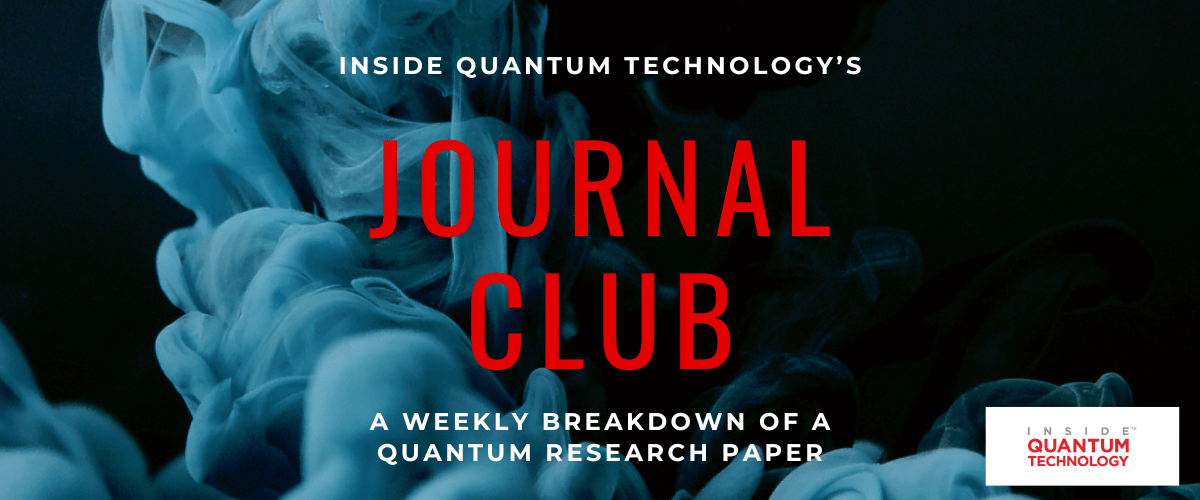IQT’s “Journal Club:” A Dive into the Harvard, MIT, University of Maryland/NIST, and QuEra Error Correction Paper

IQT’s “Journal Club” is a weekly article series that breaks down a recent quantum technology research paper and discusses its impacts on the quantum ecosystem. This week focuses on the much-discussed Nature paper published by researchers at Harvard University, MIT, University of Maryland/NIST, and QuEra, looking at error correction, which “successfully demonstrated two-qubit entangling gates with an unprecedented 99.5% fidelity on 60 neutral atom qubits in parallel,” as the press release recently announced.
The field of quantum computing is on the cusp of a breakthrough, thanks to a recent development in the realm of quantum error correction and logical quantum processors. This new study published by researchers at some of the biggest key players in quantum technology (MIT, Harvard University, NIST/University of Maryland, and QuEra) heralds a significant step forward in addressing one of the most daunting challenges in quantum computing: error correction in large-scale systems.
The Importance of Quantum Error Correction
Quantum computing promises to outperform classical computers in solving specific complex problems. However, realizing this potential on a large scale requires an exceptionally low rate of gate errors, a target that is difficult to achieve with physical devices. The solution lies in quantum error correction (QEC), which involves spreading a logical qubit’s information across multiple redundant physical qubits. This redundancy allows the system to maintain its integrity even if some physical qubits fail. Theoretically, this means that with enough qubits and sufficiently low physical error rates, a logical qubit can operate with high fidelity, paving the way for large-scale algorithms.
Despite its conceptual appeal, implementing useful QEC in practice comes with its own set of challenges. These include the significant overhead in the number of physical qubits needed and the complexity of gate operations between the delocalized logical degrees of freedom.
The Quantum Processor Set-Up
This new study introduces a programmable quantum processor that overcomes these hurdles. The processor is based on a logical-level control over logical qubits in reconfigurable neutral atom arrays. It features up to 280 physical qubits and demonstrates various key aspects of QEC, including scaling to large codes, fault tolerance, and implementing complex circuits.
The architecture of this logical processor is particularly ingenious. It’s segmented into three zones: a storage zone for dense qubit storage, an entangling zone for logical qubit encoding and gate operations, and a readout zone for mid-circuit readout of logical or physical qubits. This design allows for efficient control and minimizes entangling gate errors, which is crucial for maintaining coherence throughout the computation process.
The Results of Error Correction
One of the remarkable achievements of this processor is the successful demonstration of a two-qubit logic gate with improved performance by scaling the surface code distance. It also achieved the fault-tolerant creation of logical GHZ states (a special quantum state where multiple particles are connected in such a way that the state of each particle cannot be described independently of the others, no matter how far apart they are), feedforward entanglement teleportation, and the operation of 40 color code qubits. In more complex demonstrations, the processor realized sampling circuits with up to 48 logical qubits entangled with hypercube connectivity, showing that logical encoding substantially improves algorithmic performance.
These advancements are not just theoretical feats. They represent a practical application in early error-corrected quantum computation and chart a path toward large-scale logical processors. This development is a big deal for quantum technology, as it shows a viable way to scale up quantum computing while managing errors effectively. The implications of this are enormous, potentially bringing us closer to the realization of quantum computers that can tackle problems far beyond the reach of classical computing.
Kenna Hughes-Castleberry is the Managing Editor at Inside Quantum Technology and the Science Communicator at JILA (a partnership between the University of Colorado Boulder and NIST). Her writing beats include deep tech, quantum computing, and AI. Her work has been featured in Scientific American, Discover Magazine, New Scientist, Ars Technica, and more.



















